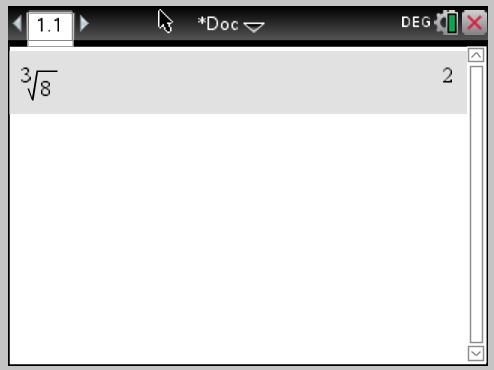Parks and Rec has to be one of my favorite shows and Rob Lowe is very cute, STILL! If you've never seen the show, put this on your to-do list! You'll think it's weird at first but the characters are hilarious. Rob Lowe joins the show during the second season. He literally says literally 20 times a show...maybe I'm exaggerating, but he does say literally a lot! Watch it...you'll love it. It's a nice way to relax and get your mind off school.
So why am I thinking about literal equations? The physics teacher is telling me that the kids can't solve literal equations! I could have told him that :), but why can't they? I know my students can solve 4x = 8, but they can't solve d = rt for r. What's the issue? I think it's several things:
- They are solving 4x = 8 in their head. They know that 4 times 2 is 8, so x has to be 2. They aren't thinking about inverse operations. I'm realizing some students still do not know that 4x means 4 times x.
- When students see a problem with only letters in it, they automatically think that it's hard. They are not making the connection that really all that is happening is that r is multiplied by t. If they knew the operation taking place in the problem, then they should ask what is the inverse operation.
- Students are not understanding that all they are really "UNDOING" the operations to solve for one of the variables...which leads me to wonder if anyone has ever explained that when you solve equations, you are actually doing PEMDAS backwards.
I've created a
lesson that addresses all three of the issues above. At first, I think the student should analyze the problem by writing the equation in words so I can see if they understand what operations are taking place. I then ask them to circle the variable they are solving for so they can have a visual of what needs to be by itself. The notes below are what I give the students to get them started on this process.
I take them through a problem similar to the one above and then I let them practice 4 problems that are similar to this. Below is a sample:
If you like collaboration, these problems would be good for a sage and scribe activity. The sage tells the scribe what to write. The scribe has to stay quiet for a while and let the sage describe the steps and what needs to be written. I eventually let the scribe have some input because sometimes they are dying to help the sage. We switch roles for each problem.
Next, I give them a worksheet that has a regular equation with a literal equation that looks just like it. They do the regular one first and then the literal equation (they are solving for c). I keep telling them to remember what they did on the regular equation and follow those same steps. Here's an example:
The final activity in this lesson is to help the students in their science class. I give them some science equations mixed in with a few math equations. I'm hoping by now, these problems will be easy.
There is one more reason students do not understand literal equations and it's our fault as teachers.
4. Teachers work on literal equations for one day maybe two and that's it. How can they really get it?
Let's not make that same mistake again. I plan on recycling literal equations back into my lessons. I plan on using them in bell-ringers and I plan on putting them on assignments and tests in the future. How many people can understand something, especially in math, after one or two days? Remember that when a student first sees a literal equation, it looks foreign to them. They are not going to make the connection that they are just equations (at first).
We can help make the student more successful in math and science if they learn to solve literal equations. Don't take this topic lightly. Ask your science teachers what else students have a hard time with when it comes to math in their class. Bring something to write with, because you'll get a list of items. Other things that my physics teacher has mentioned is conversions, graphing linear equations (knowing slope, independent and dependent) as well as being able to graph bar graphs.
Good luck and if you would like to purchase my literal equations activity, click below:
































